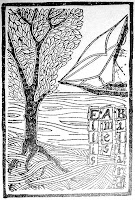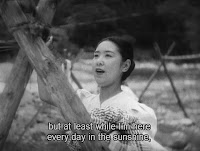 |
| Siegfried Sassoon (1917) |
The poem begins with the words "December stillness," setting the nearly-still atmosphere of both the poem and the winter day the poet is experiencing. The next words quickly show that it is more than stillness Sassoon is evoking. He is also speaking about an invisible depth behind the stillness, a spiritual depth -- one that some readers might want to use the word "God" for, even though Sassoon never employs that word:
"December stillness, teach me through your trees
That loom along the west, one with the land,
The veiled evangel of your mysteries."
At this point, it would be tempting for any poet to begin describing those "trees." After all, winter evergreens can be majestically beautiful, as can the outlines of bare trees with winter snow in the background. Instead, Sassoon seizes upon another phenomenon of winter -- that the bareness of trees can better allow us to look up at the sky:
And let me learn your secret from the sky,"
Continuing to convey his firsthand, immediate experience, Sassoon has his clear line of sight caught by something seemingly unexpected:
"And let me learn your secret from the sky,
Following a flock of steadfast, journeying birds"
Now, Sassoon's contemplative openness to Nature on this still winter day leads to his becoming more aware of, and being able to express, a yearning within his heart. The desire he speaks in the poem's final line mirrors something he perceived in the birds:
"Teach me to travel far and bear my loads."
We may all be eventually forgotten. Nonetheless, may our lives more often touch the depths of our own living by being touched by the depths of Nature.
~~~
Even if winter has only begun where you live, have you noticed any changes in Nature? Have you noticed any changes in the stirrings of your heart at this time of year?
(Sassoon's poem is from Collected Poems of Siegfried Sassoon, © 1918, 1920.)
(The entire poem can be read at this external link: "December Stillness.")

































